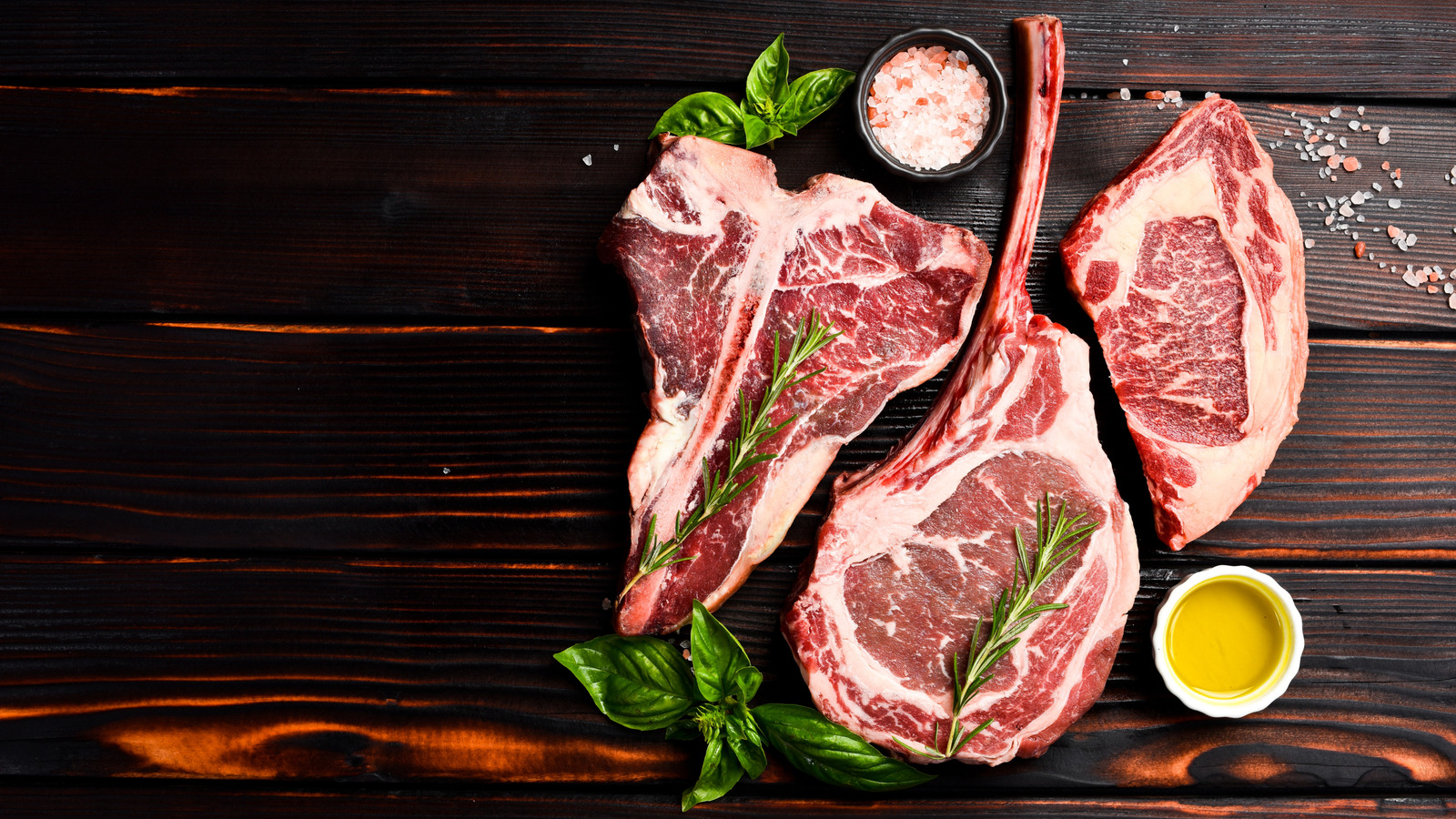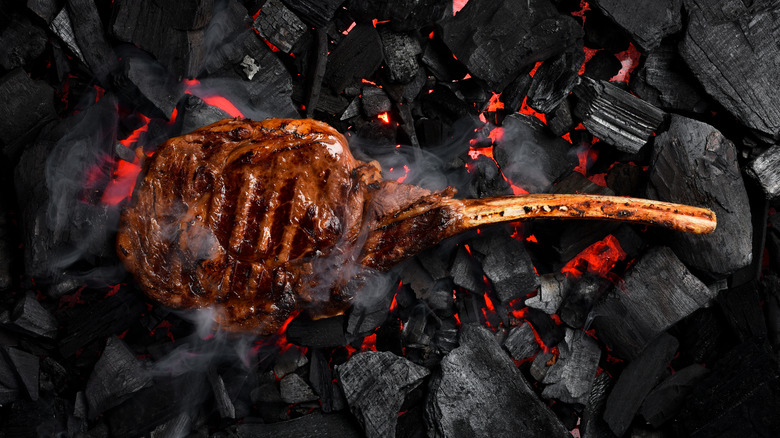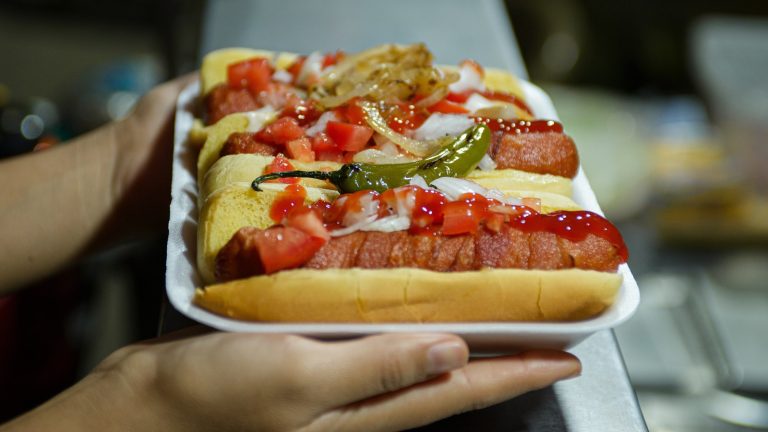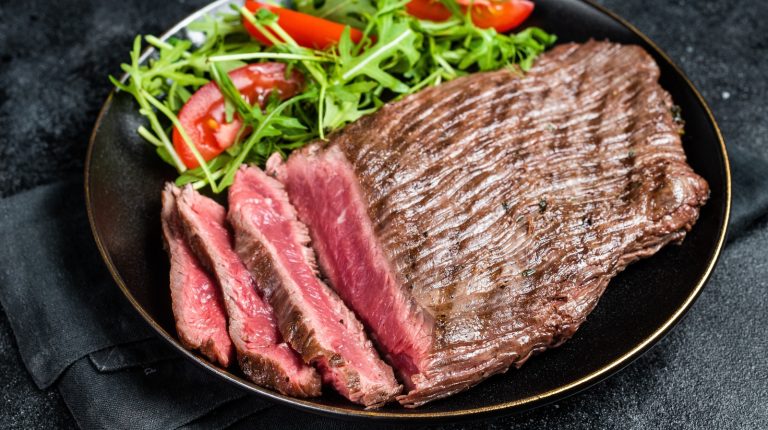Have you ever seen a tomahawk steak and thought it looked familiar? That’s because the meat itself is quite a common cut: the ribeye. Butchered from the rib section of a cow, the only real difference between the two is their presentation — and, specifically, the bone.
Bone-in steaks aren’t more flavorful than boneless thanks to how they’re most often cooked. A bone’s flavor comes from the collagen in the connective tissue around it, which requires long exposure to low or medium heat to melt and infuse surrounding stocks and meats with flavor. Since steaks are almost always prepared with high-heat fast cooking methods, their bones won’t have a chance to flavor the meat. The massive bone included with an axe-like tomahawk is purely for show — though it will extend the cooking time, as bones are a great insulator against heat.
This section of the cow has a remarkable mix of lean meat and fat and great marbling, making it Anthony Bourdain’s preferred cut of steak. While tomahawks, ribeyes, and côte de boeuf are essentially the same thing, the rib section of the cow is a versatile portion of beef that butchers can break down in many ways to produce unique meats. From short ribs to prime rib, how the meat is prepared has as much impact on its flavor and required cooking method as the cow itself.
Other cuts of meat from the rib primal
Prized for its marbling and tenderness, the rib primal is one of the most sought after, and expensive, sections of beef. While it only consists of the last six or seven ribs in a cow’s ribcage, its distinct taste and marbling make it extremely versatile, producing a swathe of different cuts depending on how exactly it’s butchered.
Before butchers separate ribeyes into individual steaks, it’s a prime rib roast – Alton Brown’s favorite cut of roast for the holidays. You can find it with or without the bones and even with excess bone, cleaned of meat and cartilage, extending away from the meat — this is called a Frenched roast. Just like tomahawks and ribeyes, prime rib roasts are juicy, tender, and full of marbling. Unlike the steaks, however, you need to roast rather than grill them to ensure the meat cooks all the way through.
This primal also produces short ribs, a melt-in-your-mouth tender cut of meat most often slow-cooked or braised. Unlike ribeyes and tomahawks, these receive plenty of flavor from their bones, and are rarely sold boneless. In certain stores, you may see short and beef ribs cut thin and perpendicular to the whole rib cage. While not particularly common in Western countries, this produces the famous galbi beef ribs popular in Korean barbecue. Cooked hot and fast, the sliver of rib bone is a great handhold if you prefer treating it like finger food.





